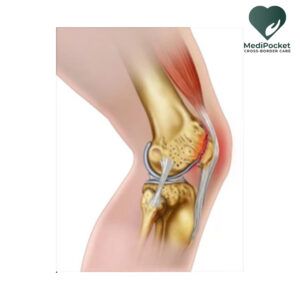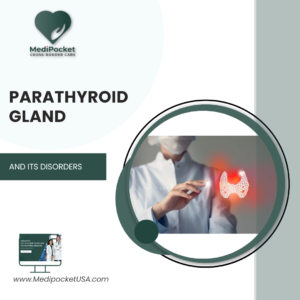A type of arthritis that affects children under the age of 16 is known as juvenile arthritis. Arthritis is a condition that causes joint inflammation and stiffness, resulting in pain and limited mobility.

The most common type of juvenile arthritis is juvenile idiopathic arthritis (JIA), which was previously known as juvenile rheumatoid arthritis.
Juvenile Idiopathic Arthritis (JIA)
The most common type of arthritis in children under the age of 16 is juvenile idiopathic arthritis (JIA). It is a chronic autoimmune disease that causes joint inflammation, which can cause pain, stiffness, swelling, and decreased mobility.
The term “idiopathic” refers to a disease whose cause is unknown. However, a combination of genetic and environmental factors is thought to play a role in the development of Juvenile Arthritis. It is not contagious and cannot be passed from person to person.
JIA is a complicated disease with several sub types determined by the number of joints involved, the presence or absence of specific symptoms, and other factors. Oligoarticular JIA is the most common sub type of JIA.
Causes
Although the precise causes of juvenile arthritis (JA) are unknown, research indicates that a combination of genetic, environmental, and immunological factors may play a role in its development.
The following are some of the possible causes of Juvenile Arthritis:
- Genetic factors: There is evidence that certain genetic mutations can predispose some children to developing JA. Certain genetic markers have been linked to an increased risk of JA, according to research.
- Environmental factors: Some environmental factors may cause or worsen the symptoms of JA. Environmental factors that have been linked to JA include viral infections, bacterial infections, and toxin exposure.
- Immunological factors: Because JA is an autoimmune disorder, the immune system incorrectly attacks healthy tissues in the body, including the joints. Immune system abnormalities are thought to contribute to the development of JA.
- Hormonal factors: Certain hormonal imbalances may play a role in the development of JA, according to some research. Changes in sex hormone levels, for example, may contribute to the development of JA in some cases.
- Other medical conditions: Children who have psoriasis or inflammatory bowel disease are at a higher risk of developing JA.
It is critical to understand that JA is not contagious and cannot be passed from one person to another. While the exact causes of JA are unknown, early diagnosis and treatment can help manage symptoms and prevent long-term joint damage.
Symptoms of Juvenile Arthritis
Juvenile arthritis (JA) can cause a variety of symptoms, which vary depending on the type of JA and its severity. The following are some of the most common JA symptoms:
- Joint pain: Children with JA may experience mild to severe pain in one or more joints. The pain may be worse in the morning or after inactivity.
- Joint swelling: One of the most common symptoms of JA is swelling around the joints. The swelling may be warm to the touch, giving the affected joint the appearance of being puffy or swollen.
- Stiffness in the affected joints: Children with JA may experience stiffness in the affected joints, making movement difficult or painful.
- Fever: Some types of Juvenile Arthritis, such as systemic-onset, cause fever.
- Fatigue: Children with JA may experience fatigue, which can make daily activities difficult.
- Rash: Some types can cause a skin rash.
- Eye inflammation: Uveitis (eye inflammation) can occur in children with Juvenile Arthritis . Uveitis symptoms include eye pain, redness, and sensitivity to light.
- Growth issues: JA can affect a child’s growth and development in some cases, particularly if the disease affects the bones or joints in the legs.
It is important to note that JA symptoms can come and go and may be more severe during active disease periods.
Diagnosis:
A medical history, physical examination, laboratory tests, and imaging studies are typically used to diagnose juvenile arthritis (JA). Here are some of the most common JA diagnostic methods:
Medical history: The doctor will take a detailed medical history of the child, including any symptoms and when they began. They will also inquire about any JA or other autoimmune disease in the family.
Physical examination: A physical examination will be performed by the doctor to look for signs of joint inflammation such as swelling, warmth, and tenderness. They will also evaluate the affected joints’ range of motion.
Blood tests: Blood tests can aid in the identification of signs of inflammation in the body, such as an elevated erythrocyte sedimentation rate (ESR) or C-reactive protein (CRP) level. Blood tests can also aid in the elucidation of other conditions that may cause similar symptoms.
Imaging studies: X-rays, ultrasounds, and magnetic resonance imaging (MRI) may be used to look for signs of joint damage or inflammation.
Joint aspiration: The doctor may perform a joint aspiration in some cases, which involves removing a small sample of fluid from the affected joint. A microscope can be used to look for signs of inflammation or infection in the fluid.
Other tests: Other tests may be ordered to aid in the diagnosis of JA, depending on the suspected subtype. If enthesitis-related arthritis is suspected, an ultrasound or magnetic resonance imaging (MRI) may be used to look for signs of inflammation in the tendons and ligaments near the joints.
Who diagnoses Juvenile Arthritis?
The diagnosis of JA can be difficult because it is a complex disease with numerous subtypes and symptoms. A rheumatologist is a doctor who specialises in the diagnosis and treatment of arthritis and other rheumatic diseases. Early diagnosis and treatment are critical for managing symptoms and preventing long-term joint damage.
Treatment
Juvenile arthritis (JA) is typically treated with a combination of medication, physical therapy, and lifestyle changes. The specific treatment plan will be determined by the type of JA, the severity of the disease, and the child’s individual needs. The following are some of the most common JA treatments:
Medications
Nonsteroidal anti-inflammatory drugs (NSAIDs) such as ibuprofen and naproxen are frequently used to relieve pain and inflammation in affected joints. Disease-modifying antirheumatic drugs (DMARDs), such as methotrexate, can be used to slow disease progression and protect joints. Biologic drugs, such as TNF-alpha inhibitors or interleukin-6 inhibitors, may be used in more severe cases to target specific immune system components and reduce inflammation.
Physical therapy
Physical therapy can help improve joint function and alleviate pain. A physical therapist can design an exercise program that is tailored to the child’s specific needs and can advise on how to perform exercises safely.
Joint protection
Wearing splints or braces can help support the affected joints and relieve pain. Using assistive devices like crutches or a wheelchair can also help reduce joint strain.
Heat or cold therapy
Application of heat or cold to the affected joints can help reduce pain and inflammation. Warm compresses or a warm bath can relax the muscles and joints, whereas cold compresses can reduce swelling.
Healthy living
Maintaining a healthy weight and eating a nutritious diet can help reduce joint strain and improve overall health. Getting enough rest and avoiding stress can also help with symptom management.
Surgery
Surgery may be required in some cases to repair or replace damaged joints. For severe cases of JA, joint replacement surgery, such as hip or knee replacement, may be an option.
To avoid future complications, all parents and guardians must look for signs and symptoms of juvenile arthritis. Early detection can help many children.
Did you know that India has only 800 rheumatologists for a population of 20,000 people? Unfortunately, this is the case. We don’t want anyone to fall behind when it comes to rheumatic issues. As a result, MediPocket USA is taking the lead in connecting Indian and UAE patients with the best doctors in the United States. Patients all over the world receive services such as second opinions, critical care, and USA treatment directly from the United States. Subscribe now to find out more!!







